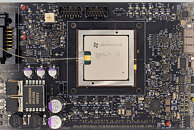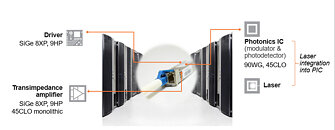
Jabil to Take Over Intel Silicon Photonics Business
Jabil Inc., a global leader in design, manufacturing, and supply chain solutions, today announced it will take over the manufacture and sale of Intel's current Silicon Photonics-based pluggable optical transceiver ("module") product lines and the development of future generations of such modules.
"This deal better positions Jabil to cater to the needs of our valued customers in the data center industry, including hyperscale, next-wave clouds, and AI cloud data centers. These complex environments present unique challenges, and we are committed to tackling them head-on and delivering innovative solutions to support the evolving demands of the data center ecosystem," stated Matt Crowley, Senior Vice President of Cloud and Enterprise Infrastructure at Jabil. "This deal enables Jabil to expand its presence in the data center value chain."
"This deal better positions Jabil to cater to the needs of our valued customers in the data center industry, including hyperscale, next-wave clouds, and AI cloud data centers. These complex environments present unique challenges, and we are committed to tackling them head-on and delivering innovative solutions to support the evolving demands of the data center ecosystem," stated Matt Crowley, Senior Vice President of Cloud and Enterprise Infrastructure at Jabil. "This deal enables Jabil to expand its presence in the data center value chain."




















